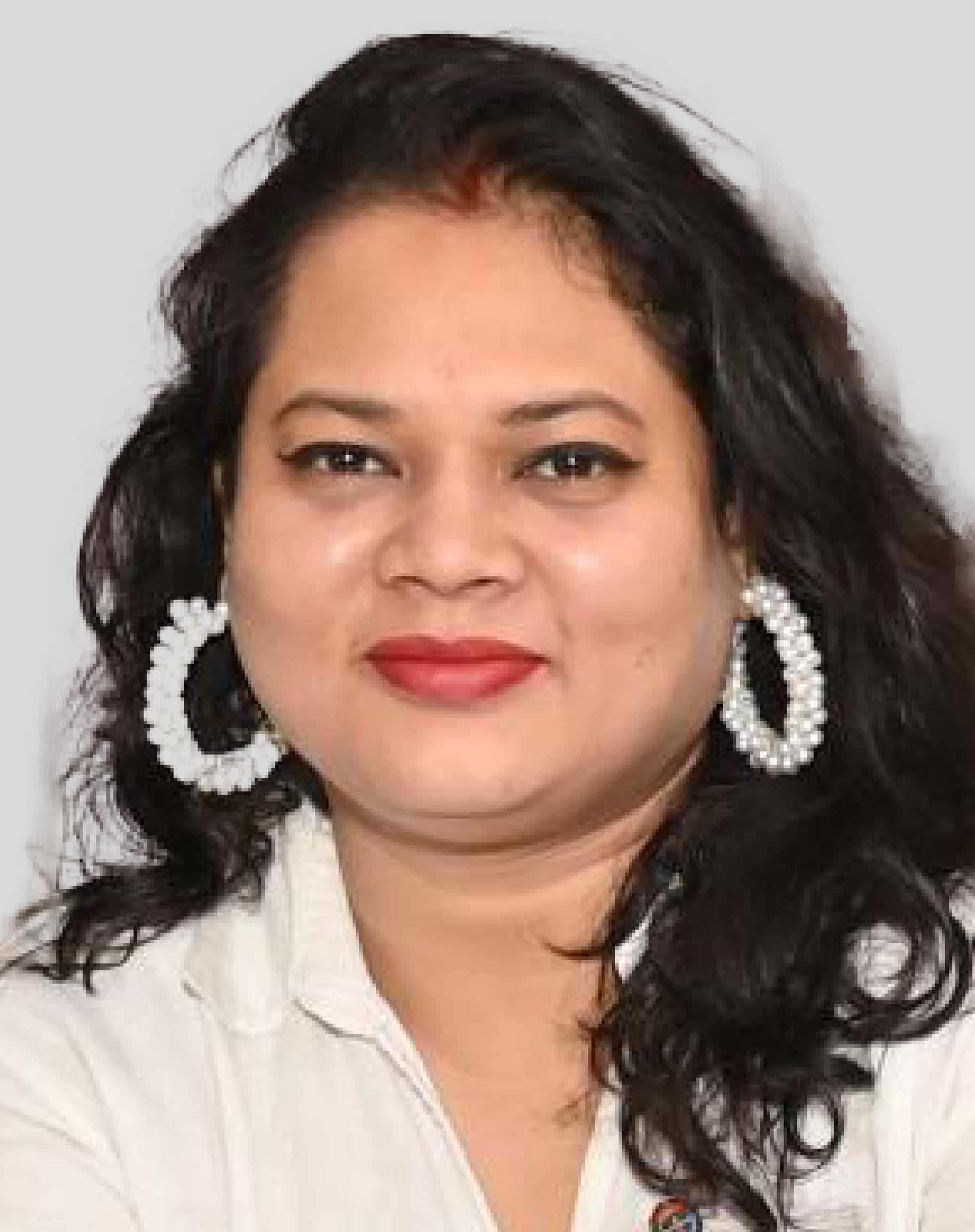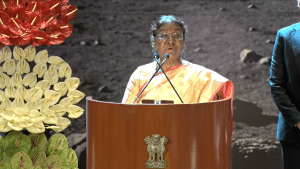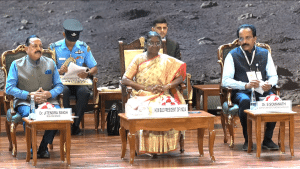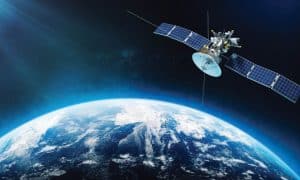The second day of Vibrant Gujarat Summit 2024 witnessed an in-depth session on the future of India’s space explorations, investment opportunities ahead, and its impact on all Indians.
Prominent members of the Indian space sector joined in for the discussion such as Dr. Pawan Kumar Goenka, Chairman, IN-SPACe, S Somanath, Secretary, DoS / Chairman, ISRO, Dr. Prakash Chauhan, Director, NRSC, ISRO, Lt Gen Ak Bhat, Director General, ISpA and others.
“After the successful launch of Chandrayaan-3 on the Moon, PM Modi told us that we must create continuous activity of human presence in space. Though we have a Gaganyaan program, it must continue over a long period leading up to a human landing on the Moon and an Indian landing on the moon by 2040,” said S Somanath, Chairman, ISRO.
“We have a roadmap for what we have planned till 2047… We can build a space station, we can send human beings to the moon, and we can create moon-based economic activity in space,” he added.
He further emphasized that we are only 16 years away from the mission, which is a good time to develop technologies to send humans to the Moon. Work on the proposed space station too is progressing aggressively and the first unit will be ready by 2028.
Concerns
Vignesh Santhanam, India Lead, Aerospace and Drones Center for the Fourth Industrial Revolution India, World Economic Forum said that while there are promising missions ahead, borders in space are blurred, hence we have to identify the following points and how can we work in this direction:
- About space traffic management
- Diversity of investment
- Cultural Awareness
- How many jobs is the sector generating?
For this, we need:
- Regulations of framework
- Cost-effective transport
- Global collaborations
“The new FDI policy is underway, which will generate a lot of investment opportunities in the space sector. We have seen a significant increase in the number of start-ups in recent years, almost 200. The private sector is now making the PSLV rocket in a consortium”, said Dr. Pawan Kumar Goenka, Chairman, IN-SPACe.
“Technology transfer for SSLV will most likely take place by the end of this financial year. We are expecting to make 25 launches in FY2024-25, which is more than what we have ever done… a combination of what ISRO will do, what NSIL will do and what the private sector will do.”
He further added that in terms of generating jobs, Gujarat is the first state to sign a MoU with IN-SPACe to set up a space manufacturing cluster, especially focusing on satellites and payloads. “The state is formulating a new space policy,” he added.
Data at the core
India’s dream of digital economy will soon see an infuse of land data from space. Dr. Prakash Chauhan, Director, NRSC, ISRO highlighted that NRSC has opened up 34 years of data from Indian space launches on the Bhoonidhi website, and in the last month, there has been a rise of 30% users, in terms of downloading data from the website. “This shows that there is a hunger for data and people are eager to use the data in their products and services,” he added.
S Somanath said, “India is a huge country where the user segments are still not explored to an extent, which we need to do. There is a huge potential in terms of how we can bring the data available through our remote sensing satellites for commercial activity.”
“We want to make sure that everyone can use the data and convert it to value added products and services. The downstream data utilisation, its commercialisation has to become one of the important drivers of creating the need and once this need is created, we will be in a position to build and launch more spacecrafts and there will be demand for building launchers, this is a chain of activity that has to take place”, he added.









